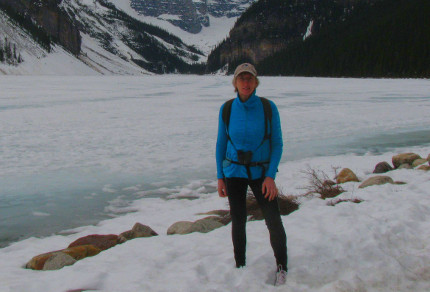Beneath overcast skies, Vilis and I headed west and then north from Banff, our destination the town of Jasper in Jasper National Park, another of Canada’s iconic Rocky Mountain national parks. En route to Lake Louise, where we planned to do some day hiking, the highway passed beneath several wildlife overpasses specially designed and vegetated to encourage wildlife to safely cross the busy traffic artery. High fences stretched for kilometres along the roadside, forming barricades that prevented large mammals such as elk and bears from crossing the divided highway except at overpasses.
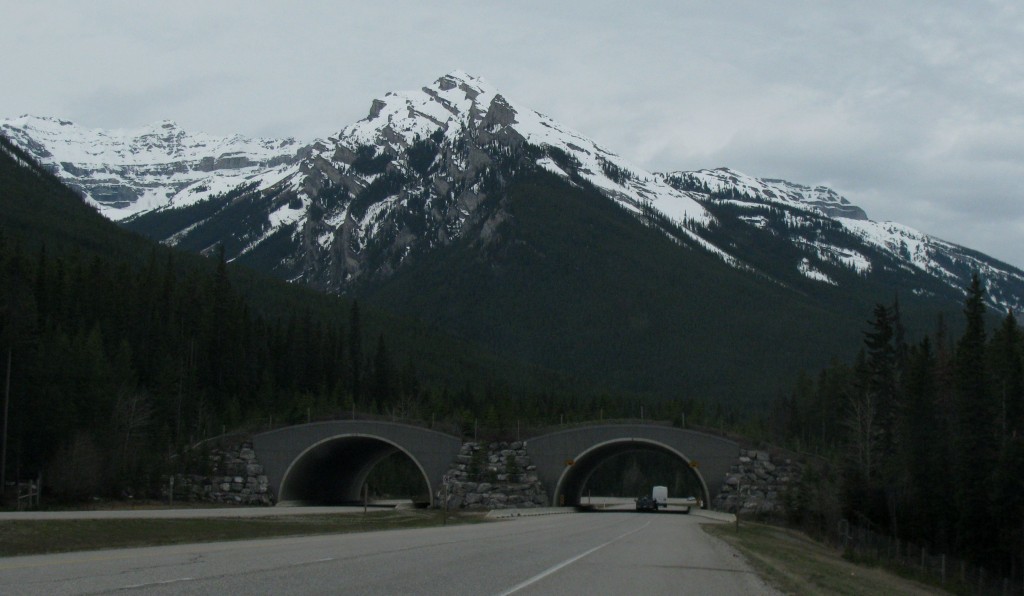
Wildlife Overpass, Banff National Park, Alberta (© Magi Nams)
Elevation increased as we drove north, and with it, the amount of snow still on the ground. At Lake Louise, we hiked Lakeshore Trail through a landscape dominated by white – the mountains smeared with snow, the lake covered in punky ice scored with parallel lines formed by cross-country skis, a frozen waterfall at the end of the lake, and increasingly deep snow beneath our feet. Posted signs warned of potential avalanches, which were all too easy to envision in that landscape of sheer or steep mountain inclines topped by deep, packed snow.
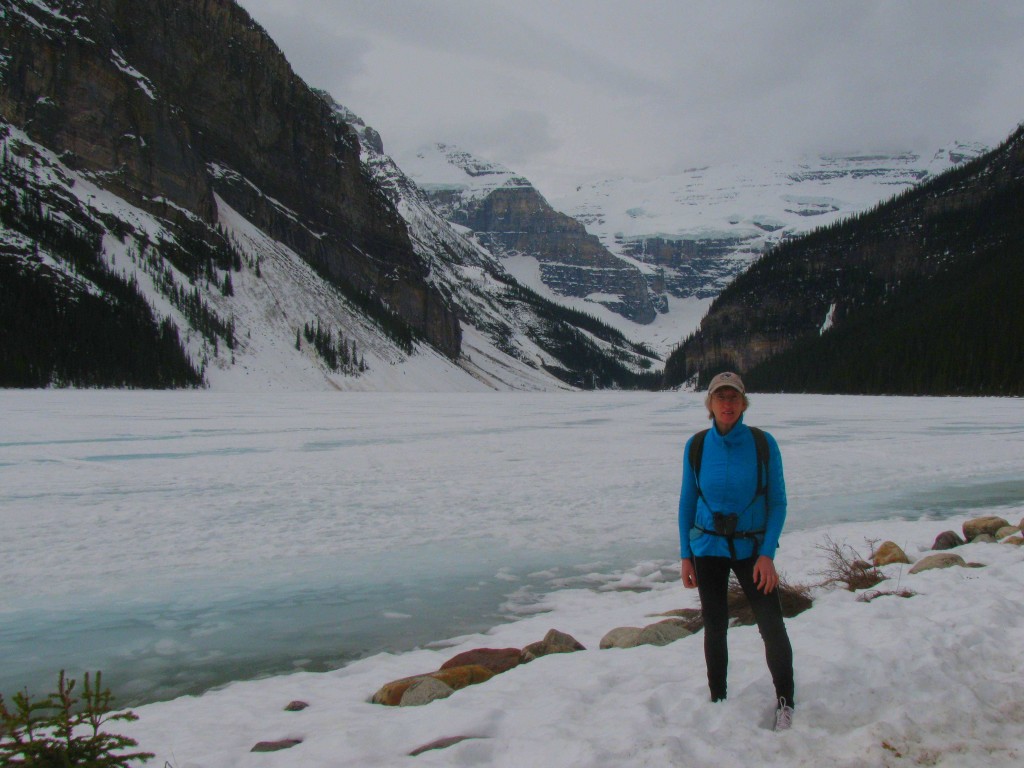
Here I am at Lake Louise, Banff National Park, Alberta (© Vilis Nams)
Clark’s nutcrackers haunted the parking lot area near the trail’s start, and a wary, blue-and-black-plumaged Stellar’s jay skulked in dense shrubs nearby. A curious grey jay (the pale-headed southern Rockies subspecies) checked us out on a section of trail bordered by densely-spaced conifers, and golden-mantled ground squirrels observed us from rocky lookouts on a bare hillside. The cold air carried vocalizations of golden-crowned kinglets, varied thrush, northern ravens, winter wren, and robins. Dark-eyed juncos and a yellow-rumped warbler flitted in shoreline trees and shrubs.
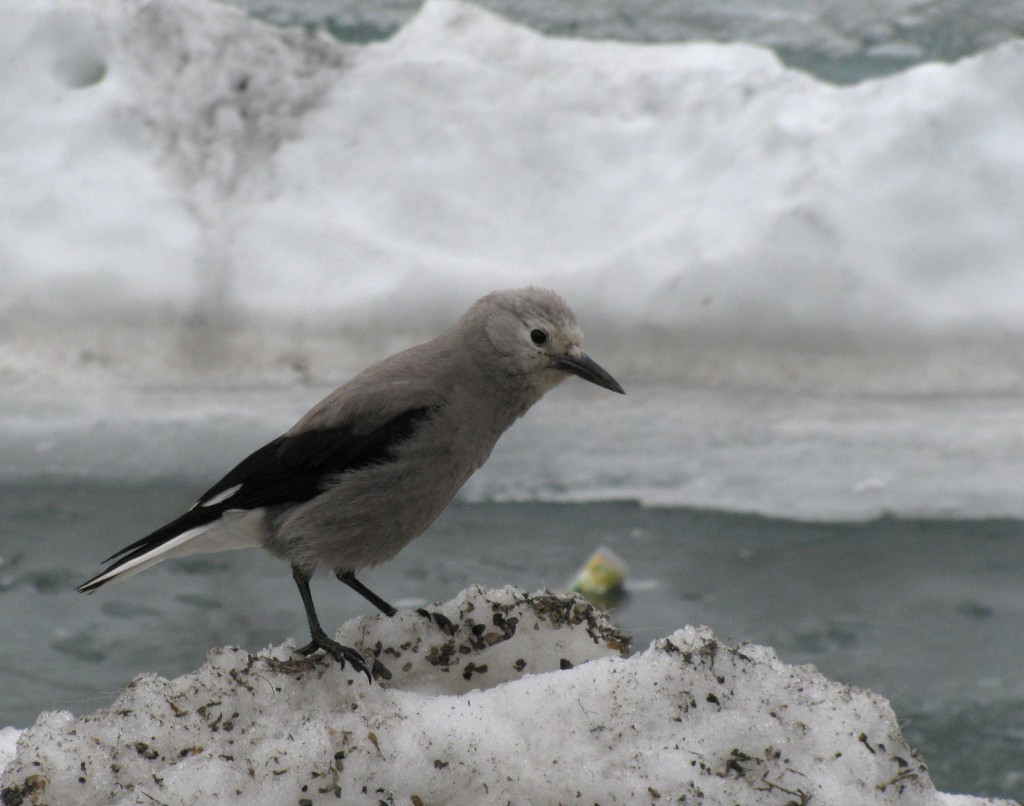
Clark’s Nutcracker at Lake Louise, Alberta (© Vilis Nams)
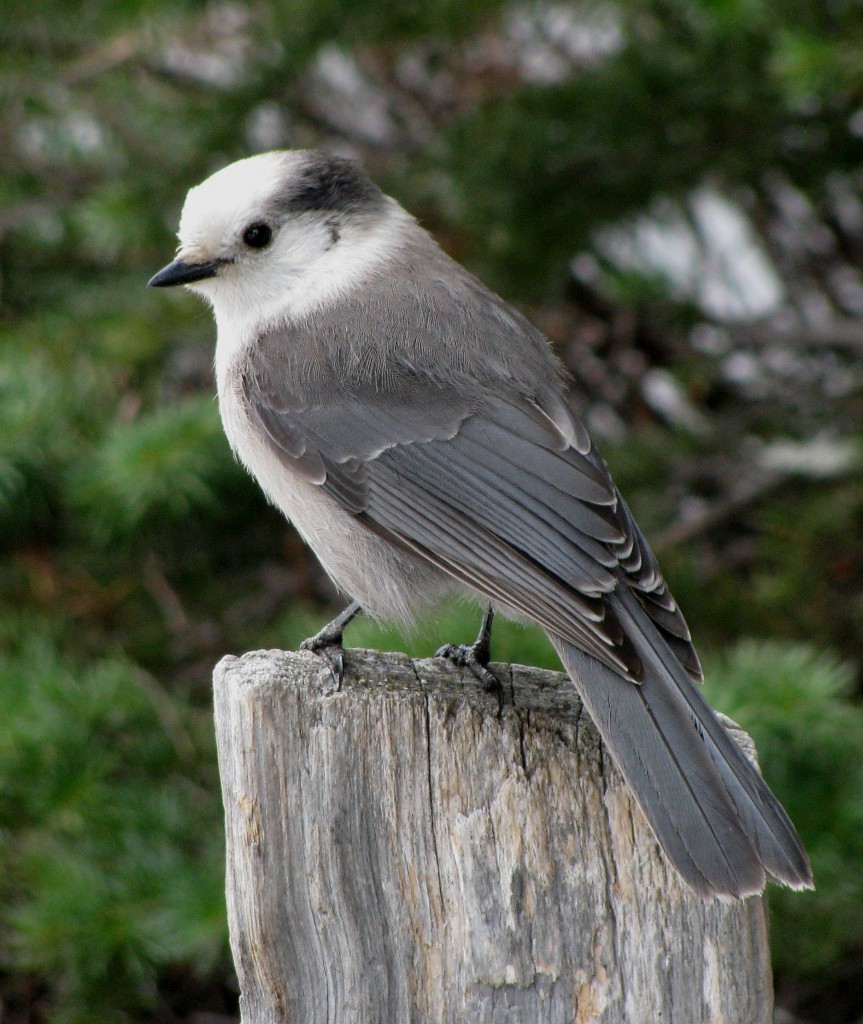
Grey Jay at Lake Louise, Alberta (© Vilis Nams)
With hiking opportunities at Lake Louise limited due to the late snowpack, we continued our northward drive on the Icefields Parkway. At Crowfoot Lookout, male brown-headed cowbirds displayed to females on the gravel pull-off area, their wings outspread and beaks pointed upward. From the Bow Summit/Peyto Lake Lookout trailhead, we walked to the Peyto Lake Lookout with quick, nimble steps over ‘post-hole’ snow in which other hikers had punched through, leaving deep holes in the sugary snow. I managed to avoid plunging in to the hip, but Vilis dug a few ‘post-holes’, and a weightier hiker wearing heavy hiking boots struggled, progressing only a few steps at a time without punching holes. The view from the lookout was worth the ‘post-holes’ – a brooding, dark valley bordered by soaring peaks and bedded with ice-encrusted Peyto Lake. Downslope from the lookout, a golden-mantled ground squirrel foraged on a patch of earth bare of snow but thoughtlessly littered with cigarette butts and discarded chewing gum.

Peyto Lake, Banff National Park, Alberta (© Vilis Nams)
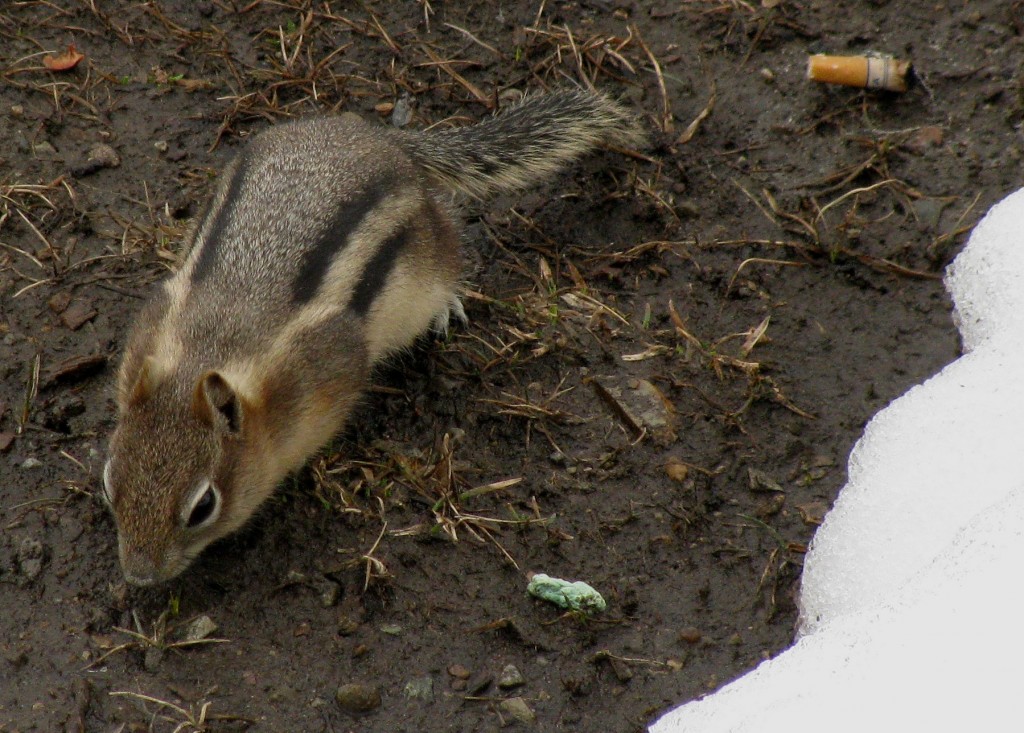
Golden-mantled ground squirrel, Peyto Lake Lookout, Banff National Park (© Magi Nams)
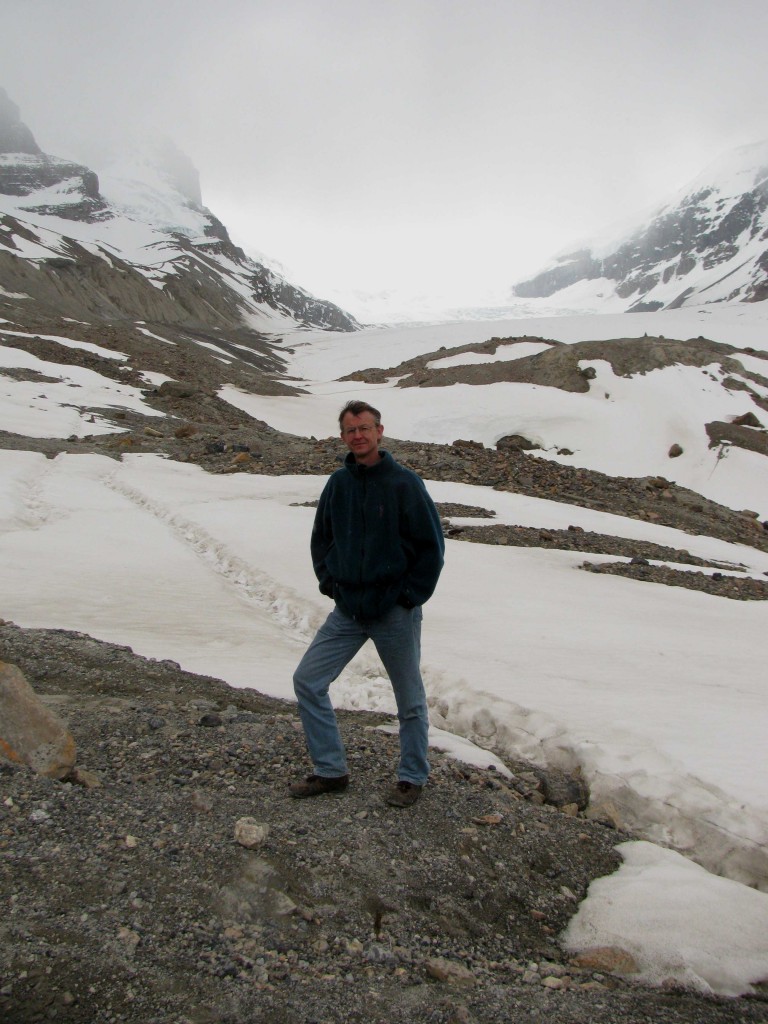
Vilis and the Athabasca Glacier, Columbia Icefields, Jasper National Park, Alberta (© Magi Nams)
Driving farther north, we spotted mountain goats on cliffsides near the highway, the goats’ shaggy coats of white hair strikingly visible against dark rock. At the Columbia Icefield Centre, we hiked to near the toe of the Athabasca Glacier, crossing swift-flowing rivulets and mounds of glacier-scoured gravel and broken rock. Rain spat at us, prompting us to hurry back to the car, and then poured down onto the Rockies as we continued north toward Jasper. Bighorn sheep licked salts at the roadside. A bald eagle surveyed its mountain kingdom from atop a tall conifer. Looming peaks shrouded with cloud ruled a landscape enwrapped with austere mystery.
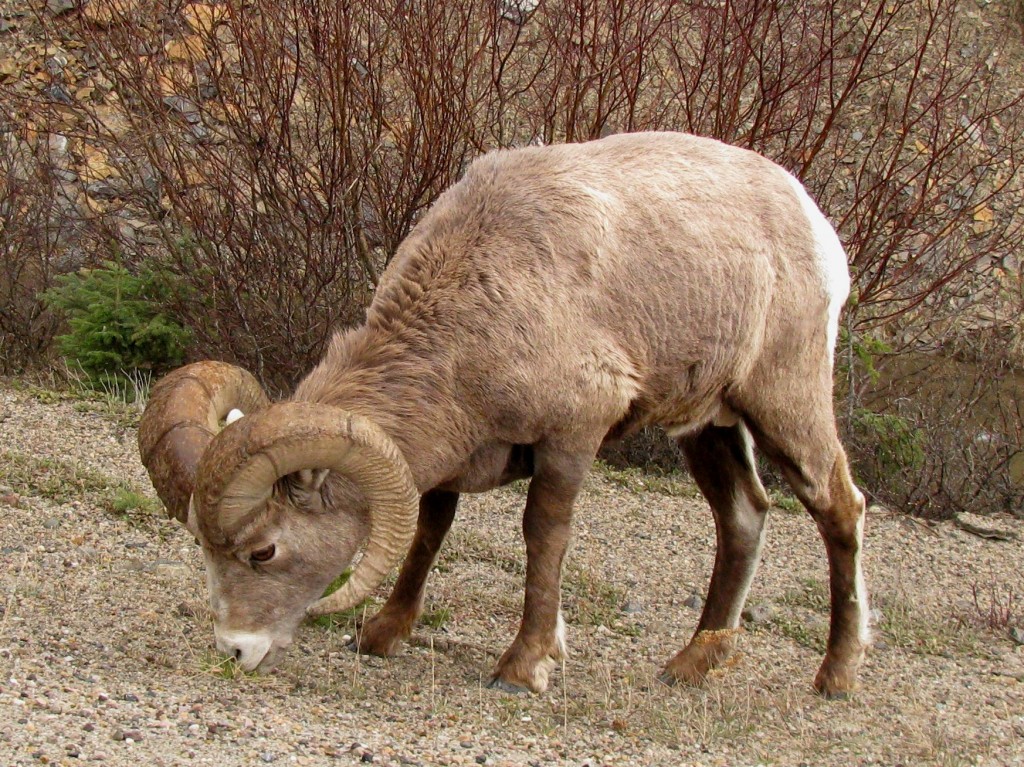
Bighorn Ram, Jasper National Park, Alberta (© Magi Nams)
Today’s fauna: rock doves, American robins, American crows, Clark’s nutcrackers, ruby-crowned kinglets, golden-crowned kinglets, dark-eyed juncos, yellow-rumped warblers, varied thrush, grey jay, *golden-mantled ground squirrels, Stellar’s jay, winter wren, northern ravens, brown-headed cowbirds, red squirrel, Columbian ground squirrel, mountain goats, bighorn sheep, bald eagle. (*lifelist sighting)

